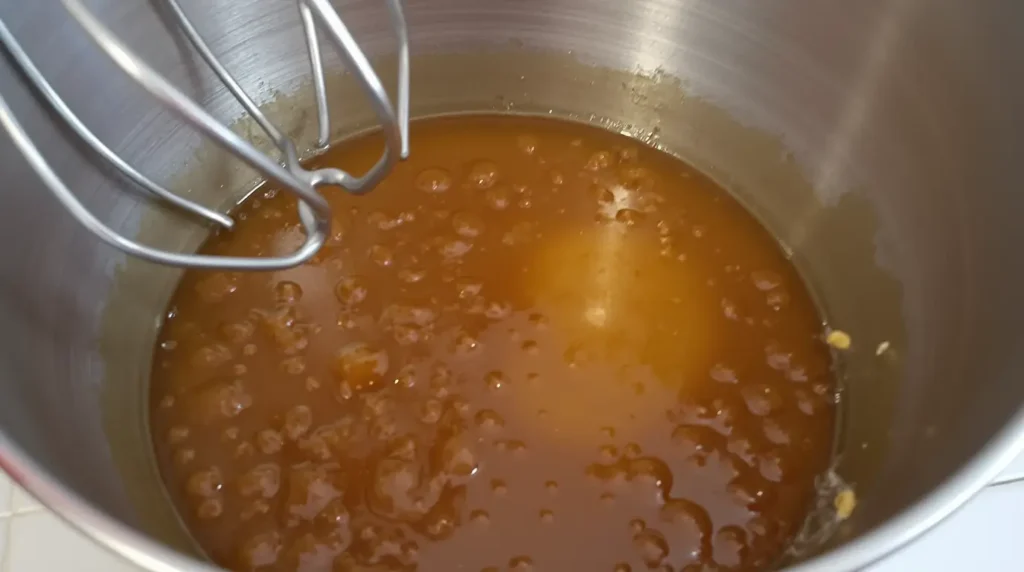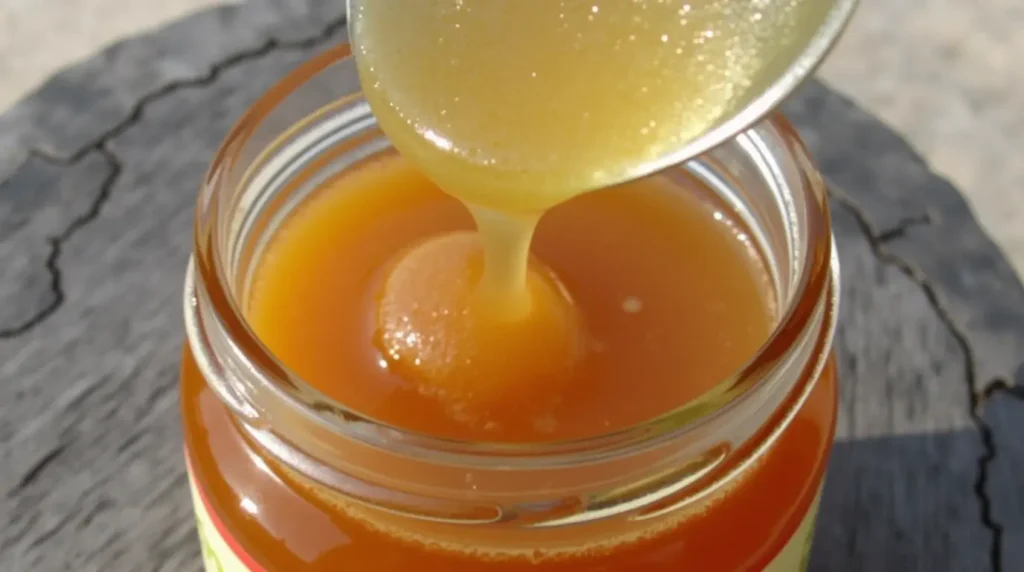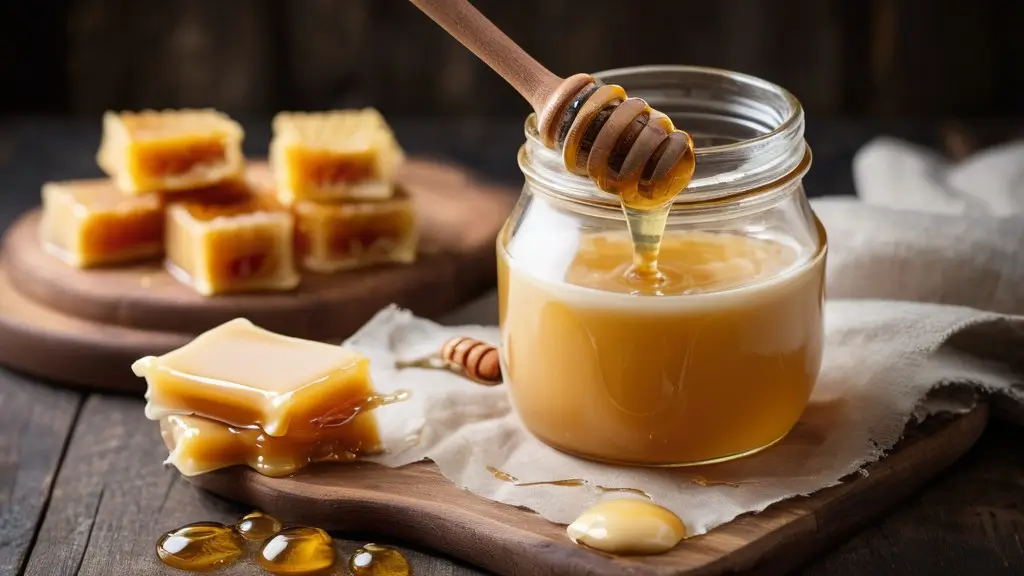Regular honey can become a smooth, spreadable honey delight in just 25 minutes. Making creamed honey at home, also known as whipped honey, needs just one ingredient without any special additives. This creamed honey recipe will guide you through the process of creating this delicious treat.
Creamed honey, which people also call whipped honey or spun honey, stays 100% natural and keeps all the nutritional benefits of regular honey. The simple process combines equal parts of liquid and crystallized honey. Air gets mixed in to create a lighter, creamier texture that’s easier to handle than regular honey. This versatile spread can last forever if you store it properly.

This piece will help you create creamy honey from scratch with basic kitchen tools. You’ll learn the crystallization process and discover ways to add flavor variations like cinnamon honey or lemon honey. The steps will guide you to achieve perfect, silky results that taste great as a breakfast spread or in your favorite tea.
Table of Contents
Understanding Creamed Honey Basics
Creamed honey is an interesting way regular honey transforms through controlled crystallization. The texture stays smooth and spreadable, like butter or peanut butter, making it an excellent breakfast spread.
What exactly is creamed honey
You won’t find any dairy products or additives in creamed honey, which people sometimes call whipped honey or spun honey. The name comes from its velvety consistency that develops through a specialized crystallization process. The process needs finely crystallized honey (seed honey) added to liquid honey to create uniform crystals.
How crystallization works
The sugar composition makes creamed honey possible. Two types of sugar – glucose and fructose – make up most of honey. Crystals form when glucose separates from water and becomes stable. Temperature plays a vital role – honey stored at 20°C (68°F) creates larger crystals than honey kept at -20°C (-4°F).
Benefits over liquid honey
Creamed honey has several advantages compared to liquid honey:
- The consistency stays stable without separation
- The non-drip texture creates less mess
- Controlled crystallization leads to longer shelf life
- The flavor feels richer because it stays on your tongue longer
Raw honey’s nutritional value remains intact in creamed honey. The crystals stay smaller than 25 microns (0.025mm) through controlled crystallization, which creates an incredibly smooth texture. This makes it ideal to spread on toast, stir into drinks, or use in cooking across different ways.
Essential Equipment and Ingredients

The success of your creamed honey depends on selecting quality ingredients and having the right equipment. These two elements form the foundation of your final product.
Choosing the right honey
Natural honey, preferably unfiltered honey, is your best choice to make recipe. Natural impurities and pollen grains in unheated honey help it crystallize faster. Some honey varieties work better than others – clover, lavender, and dandelion honey crystallize faster due to their higher glucose content. Honey varieties like acacia, sage, and tupelo contain more fructose and won’t work as well for creaming.
Required tools and equipment
You’ll need some simple kitchen tools to make creamed honey at home:
- A stand mixer with whisk attachments
- Clean, dry storage containers or glass jars
- A reliable thermometer to monitor temperature
- A rubber spatula to scrape and mix
- An unheated storage area that stays at 50-57°F (10-14°C)
Your mixing equipment plays a key role in getting the right texture. A stand mixer gives the best results, but a handheld mixer is enough – you’ll just need more time and effort. Keep in mind that handheld mixers need longer mixing sessions compared to stand mixers.
The right temperature makes a big difference in the process. Your storage area temperature shapes the final texture – honey kept below 50°F won’t develop unwanted crystals. Good storage containers keep moisture out and prevent fermentation.
You might want to invest in specialized equipment like honey creamers or mixer attachments that work with bottling tanks if you plan to make creamed honey often. These tools make the process easier, especially when you make larger batches.
Step-by-Step Crystallization Process
Perfect creamed honey needs precision and careful attention. Let’s look at how you can turn liquid honey into a smooth, spreadable treat with a creamy texture.
Preparing your workspace
Choose an unheated storage area with steady temperatures between 50-57°F. Your mixing bowls and containers should be clean and completely dry because moisture will affect how crystals form. Note that your workspace’s temperature will affect your creamed honey’s final texture by a lot.

Temperature control methods
Managing temperature is a vital part of the process. Heat your liquid honey to 140°F and keep it there for 30 minutes to dissolve any existing crystals. Cool the honey faster to 75°F before you add the seed honey. These temperature steps will give a proper crystal formation and stop unwanted crystallization.
Mixing techniques
The simple mixing ratio needs one part creamed honey (seed) to 10 parts raw strained honey. Here are the mixing steps for the blending process:
- Combine room-temperature raw honey with seed honey
- Beat on low speed for about 3 minutes until light and fluffy
- Mix in 15-minute intervals with 45-minute rest periods
- Complete four mixing sessions over 3 hours
High-speed mixing should be avoided because it creates large air bubbles that will affect the final texture. The air incorporation should be gentle to achieve the desired creamy texture.
Monitoring crystal formation
Crystallization usually takes 7-14 days under the right conditions. Keep containers at 57°F – this temperature helps create tiny, undetectable crystals faster. Check the process daily. You’ll know it’s successful when the texture becomes smooth like fondant, firm enough to hold shape but easy to spread. The final product should feel smooth on your tongue without any graininess.
Storage and Quality Control
The way you store your homemade creamed honey determines its quality over time. You need specific conditions during the controlled crystallization process to keep its signature texture and stop unwanted changes.
Proper storage conditions
Your creamed honey needs a steady temperature of 57°F (14°C) to stay perfectly consistent. Glass containers work best because they don’t affect the flavor and block out unwanted smells. Skip the refrigerator and store your honey in a cool, dark spot away from sunlight.
To preserve it best:
- Use airtight containers that keep moisture out
- Store away from foods with strong smells
- Scoop with clean utensils only
- Keep the temperature steady
Moisture poses one of the biggest threats to honey quality. Good sealing and temperature control stop unwanted crystallization or melting, which helps your creamed honey stay just right.
Signs of successful crystallization
You can spot well-crystallized creamed honey by looking at specific features. The texture should feel smooth on your tongue without any grains. A good batch stays butter-like at room temperature.
In spite of that, warmer storage spots might turn your honey back to liquid. This shows you’re not storing it right. Look for these quality signs in your creamed honey:
- Smooth, spreadable consistency all the way through
- No liquid separating out
- Same color everywhere with no dark patches
- No foam or bubbles on top

You can safely remove any bubbles that pop up after setting. The honey gets firmer and more butter-like as it cools in its container. Note that creamed honey keeps its texture nicely during storage at room temperature or in a cool spot.
Conclusion
Creating creamed honey is a rewarding process that delivers delicious results. Natural honey becomes a smooth, spreadable honey delight when you control temperature and use proper crystallization techniques. This natural process keeps all nutritional benefits intact while giving you a versatile product that’s perfect for daily use.
Quality raw honey, precise temperatures, and proper storage conditions are the foundations of success. Your attention to these details produces perfectly creamed honey with a silky-smooth texture that spreads easily and doesn’t drip.
Once you become skilled at this technique, you’ll discover endless possibilities to create custom honey spreads at home. Anyone can achieve professional results by being systematic and organized. Want to explore more delicious recipes? Check out recipesnutritious.com to boost your culinary adventures with more meals and recipes.
Note that patience is crucial during the crystallization process. Your commitment will reward you with perfectly creamed honey that keeps its ideal consistency and delightful taste for months. Whether you’re a beekeeping enthusiast or just love good honey, this creamed honey recipe is sure to become a favorite.
FAQs
Q1. What is creamed honey and how is it different from regular honey? Creamed honey, also known as whipped honey, is a spreadable form of honey created through controlled crystallization. It has a smooth, butter-like consistency and is less messy than liquid honey. Creamed honey maintains all the nutritional benefits of raw honey while offering enhanced flavor perception and a longer shelf life.
Q2. Can I make creamed honey at home without a starter? Yes, you can make creamed honey without a starter. One method is to use crystallized honey as a seed. Grind about 100 grams of crystallized honey into fine crystals using a mortar and pestle, then mix it into 1000 grams of liquid honey. Store the mixture in a cool place for about a week to achieve the creamed consistency.
Q3. What equipment do I need to make creamed honey? To make creamed honey at home, you’ll need basic kitchen tools such as a stand mixer with whisk attachments, clean and dry storage containers or glass jars, a reliable thermometer for temperature monitoring, and a rubber spatula for mixing. You’ll also need an unheated storage area that can maintain a temperature between 50-57°F (10-14°C).
Q4. How long does the crystallization process take when making creamed honey? The crystallization process for creamed honey typically takes 7-14 days under proper conditions. It’s important to store the honey at around 57°F (14°C) during this time, as this temperature promotes rapid crystallization with tiny, undetectable crystals. Monitor the process daily until you achieve a smooth, fondant-like texture.
Q5. How should I store creamed honey to maintain its quality? Store creamed honey in airtight containers, preferably glass, at a steady temperature of about 57°F (14°C). Keep it in a cool, dark place away from direct sunlight and strong-smelling foods. Avoid refrigeration and use clean utensils when scooping. Proper storage will help maintain the honey’s desired consistency and prevent unwanted crystallization or melting.
Q6. Can I add flavors to my creamed honey? Yes, you can create flavor variations in your creamed honey. Popular options include cinnamon honey, lemon honey, and even chocolate honey. Add these flavors during the mixing process to ensure even distribution throughout the creamed honey.
Q7. Is creamed honey suitable for gift sets? Absolutely! Creamed honey makes an excellent addition to gift sets. Its unique texture and versatility as a breakfast spread or cooking ingredient make it a thoughtful and appreciated gift. Consider pairing it with other gourmet items or presenting it in decorative jars for a special touch.
Q8. How does the nutritional value of creamed honey compare to liquid honey? The nutritional value of creamed honey is essentially the same as liquid honey. The crystallization process does not alter the honey’s nutritional content. Both forms contain natural sugars, trace amounts of vitamins and minerals, and beneficial enzymes.
Q9. Can I use eco-certified honey for making creamed honey? Yes, you can use eco-certified honey to make creamed honey. In fact, using high-quality, sustainably sourced honey can enhance the final product’s appeal, especially for environmentally conscious consumers.
Q10. What are some serving suggestions for creamed honey? Creamed honey is versatile and can be enjoyed in many ways. Some serving suggestions include:
- Spread it on toast, bagels, or muffins
- Use it as a natural sweetener in tea or coffee
- Drizzle over yogurt or oatmeal
- Pair with cheese on a charcuterie board
- Use as a glaze for roasted meats or vegetables
- Incorporate into baking recipes for added moisture and sweetness

